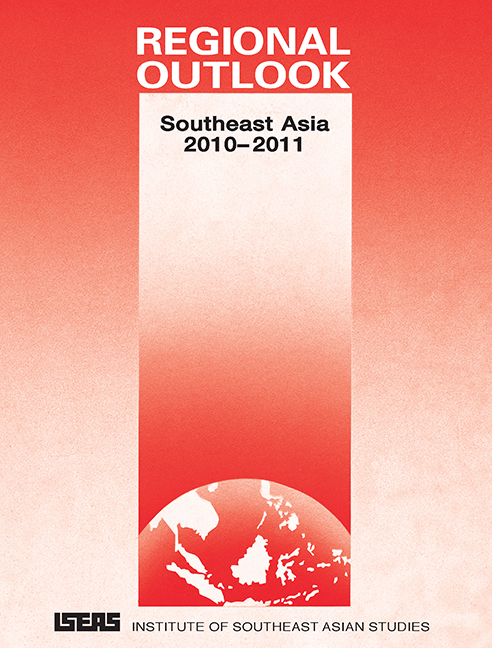Regional Economic Outlook
from ECONOMIC OUTLOOK
Published online by Cambridge University Press: 21 October 2015
Summary
Southeast Asia has been at the mercy of the global financial and economic crisis, generated from the United States and United Kingdom, for the most of 2009. While it was not directly hit by the liquidity crunch, it did get affected by the collapse of demand for Southeast Asia's exports. It further got a blow through reduced tourism and slower demand for immigrant labor services from the West. In addition to the real economy, the financial sector of the region suffered from the loss of confidence and disruption in trade credit.
The more open economies — Singapore and Malaysia — ailed the most with the contraction in trade and subsequently in industrial production. This was mainly because the firms were drawing down their reserves and reducing production. The problem got aggravated as the domestic demand remained weak and investments trailed. Unemployment in much of the region rose, particularly in Singapore and Malaysia. Thailand's economy, besides its dependence on exports, also lost confidence amongst consumers and investors due to severe political turmoil for most of the year.
REGIONAL ECONOMIC OUTLOOK
• 2009 economic growth for Southeast Asia is expected to dip sharply to 0.1 per cent before regaining a gradual and cautious pace in 2010 and 2011.
• Inflation is likely to remain subdued in 2009 and is expected to pick up on gradual economic recovery in 2010 and 2011.
• Current account surplus (as a percentage of GDP) for the region will be narrowed on higher imports, offsetting the moderate rise in exports in the next two years.
• Several risks remain on the downside: hasty withdrawal of stimulus measures, the U.S. housing market, flu pandemics and rally in asset prices.
This prompted most of the Southeast Asia's governments and central banks to implement stimulus measures through fiscal and monetary expansion. Households were given tax cuts and income support to increase consumption and hence national income. Monetary authorities reduced interest rates to provide liquidity and boost expenditures and investments. For example, Bank Indonesia brought down its policy rate by 300 basis points from December 2008 to August 2009 to a record low of 6.5 per cent.
- Type
- Chapter
- Information
- Regional OutlookSoutheast Asia 2010-2011, pp. 65 - 96Publisher: ISEAS–Yusof Ishak InstitutePrint publication year: 2010

